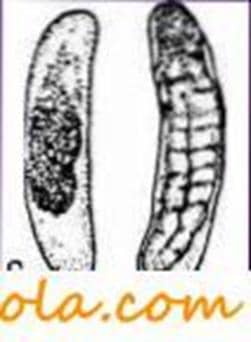
Dry seeding is an infectious disease, accompanied by the drying of the eggs at the time the embryo leaves it; occurs when the bees are not moistened with larval shell food, it remains dry and the embryo can not break it.
Causes of the disease.
Dry seeding occurs when there is insufficient care for brood from the side of bees. The absence of larval food, which the bees moisten the shell of the egg, does not allow the larva developed in the egg to break through the shell and leave it. There is also a “genetic variegated brood”, which is a diploid brood, deposited by some uterus while closely related to a drones (“brother”). Such eggs develop only before the hatching of the larva from the egg. When such larvae leave, the bees-nurses destroy them.
Course of the disease.
The disease is short-lived. Occurs when, for some reason, a lot of bees are killed in a short time or the beekeeper puts many frames into the family with seeding from other families, or when the beekeeper removes many young non-flying bees from the family. This disease stops shortly after the family has established a certain ratio of seeding and young bees.
A lot of beekeeping techniques are introduced in the family of dry seeding, as a result of which a large number of frames with seeding or a significant decrease in the number of bees-nurses are concentrated in the family. This phenomenon can be observed, for example, during the swarming of the family, with the raid of old bees on the uterus and on the frame with a large number of seeding. In these cases, the family is deprived of young bees, nurses, which contributes to the appearance of dry seeding.
Diagnosis.
When examining the cells in the cells, eggs can be found around which there is no larval food. The study of individual eggs under the magnifying glass shows the presence in the shell of a fully formed larva.
Control measures.
Strengthening the family by young non-flying bees, supplying the family with honey and a good pergola. Often the disease passes without assistance.
Исправление семей с трутовками. Какие мази на пчелином яде.
Diseases of bees